Posted by · 1 Comment
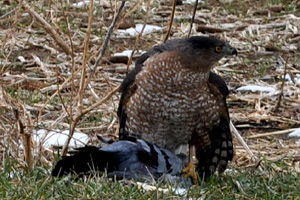 Hawks are routine aerial visitors to our place.
Hawks are routine aerial visitors to our place.
We have many chickens in the barnyard and about a third of the group tends to free-range, flying out of the enclosure in the morning and back in the evening.
You can imagine the “alarm system” that goes off when a hen or rooster spots a circling hawk. It really is quite amazing. The immediate group will stand perfectly still while their heads are cocked toward the sky to spot the predator. The “cry” is unlike any other sound a chicken will make. In the warmer months, I’ll even stop what I’m doing in the yard to see if I can spot the hawk!
Hawks are so brazen, they’ll fly into the barn through an open window (I say this because the entryway doesn’t have to be big; if they want in, they’ll get in) and seek out a meal.
The other day, it was a pigeon.
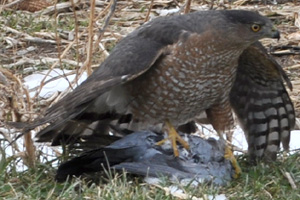
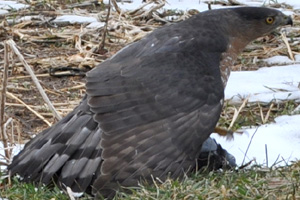 This particular Sharpshin managed to get a pigeon and heave it to the outskirts of the vegetable garden. He sat there for a couple of hours, feasting, and when I slowly made my way to take pictures of this stately bird, he flew off—clutching the pigeon—and alighted atop a tree hundreds of yards away.
This particular Sharpshin managed to get a pigeon and heave it to the outskirts of the vegetable garden. He sat there for a couple of hours, feasting, and when I slowly made my way to take pictures of this stately bird, he flew off—clutching the pigeon—and alighted atop a tree hundreds of yards away.
Since I used to pilot aircraft, I have a professional appreciation for what I had witnessed. Although the hawk had wingspan and girth on the pigeon, to take flight immediately from a “still” position, carrying cargo? Jaw-dropping. Which is exactly why I couldn’t get the camera up in time to snap a picture—I was too busy processing what I had just seen.

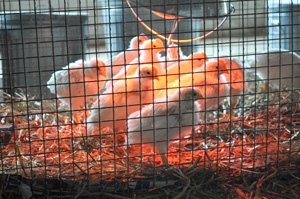
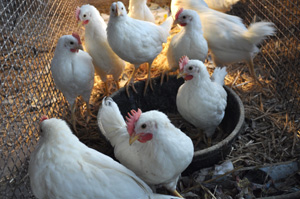
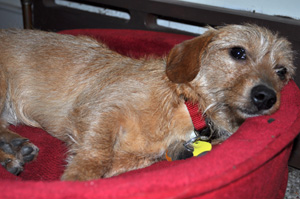
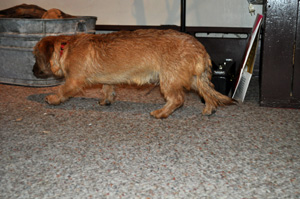
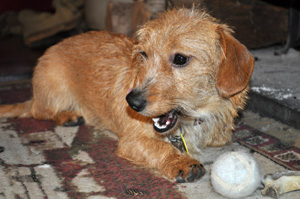
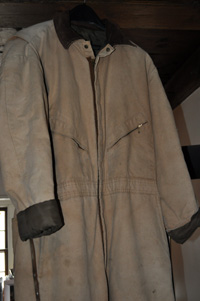


 At Christmastime, the homestead was decorated in a colonial manner, of course, and before your tour began, you were offered a cup of hot wassail. That cup, although delicious, varied dramatically from the wassail one enjoyed centuries ago. Today’s version is more like a mulled cider—yesteryear’s incorporated ale and spices with “sops” or toast placed on top to “sop” the liquid.
At Christmastime, the homestead was decorated in a colonial manner, of course, and before your tour began, you were offered a cup of hot wassail. That cup, although delicious, varied dramatically from the wassail one enjoyed centuries ago. Today’s version is more like a mulled cider—yesteryear’s incorporated ale and spices with “sops” or toast placed on top to “sop” the liquid.
